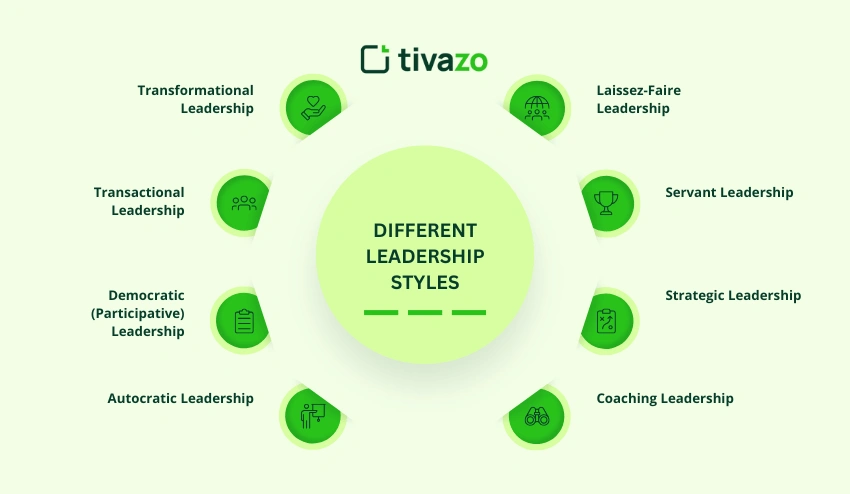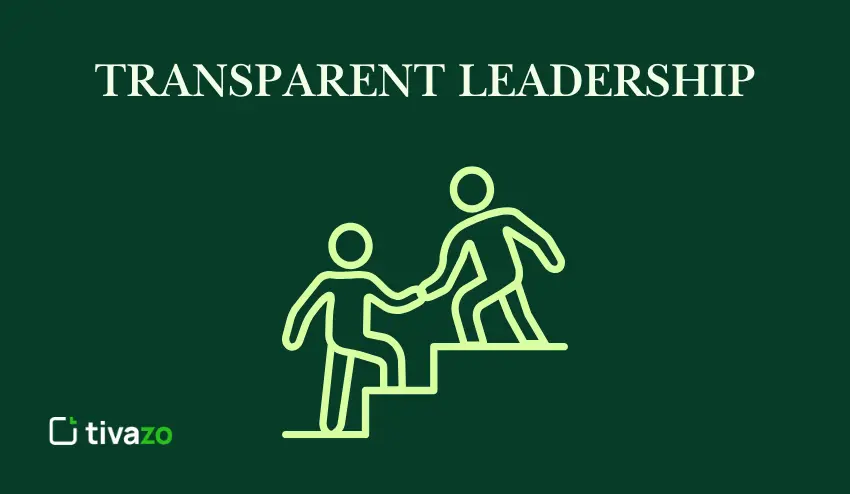Leadership is what will make or break an organization. How a leader leads, inspires, and influences his or her team directly affects performance, innovation, and general success.
Knowledge of the leadership styles and effectiveness is critical to leaders aiming to motivate the teams, increase productivity, and attain strategic objectives. Among transformational and democratic methods of leadership, servant and coaching methods, the style in which a leader works is the determinant of the team spirit, decision-making, and organizational development.
The modern business environment is very dynamic, and no one-size-fits-all strategy can be applied. The style selected by leaders that is adapted to the team, project, or organizational culture is the one that leads to greater engagement and superior outcomes. You can become more influential and have tangible success by exercising various leadership styles, analyzing their efficiency, and using such knowledge as emotional intelligence, situational leadership, and employee motivation. It is a guide that will make you realize which strategies are the most effective and why it is important.
Related: Different Leadership Theories Explained: A Guide for Every Leader
What are Leadership Styles?
Leadership styles refer to the distinct approaches and behaviors that leaders use to guide, motivate, and manage their teams. In regions like the United States, Europe, and Asia, understanding leadership styles and effectiveness is crucial for organizations aiming to boost productivity, enhance employee engagement, and achieve strategic objectives. Different industries and cultural contexts may favor certain leadership styles, making it essential for leaders to recognize what works best in their specific environment.
Leadership styles refer to diverse approaches, and they include transformational, transactional, democratic, autocratic, and servant leadership. The styles vary in their impact on the team dynamics, decision-making, and the success of the organization. Through learning these styles and evaluating their success, leaders are able to develop more energized, united, and high-performing teams. Also, the inclusion of knowledge about emotional intelligence, situational leadership, and team motivation can assist the leaders in adjusting their style to provide the greatest possible outcomes in the context of various cultural and regional backgrounds.
Common Leadership Styles and their Effectiveness
Leaders should be able to comprehend the most common leadership styles and effectiveness in inspiring, motivating, and guiding the team. Both leadership styles have their own advantages and difficulties, and the understanding of the timing of their usage can have a great influence on the work of the organization.

1. Transformational Leadership
Transformational leaders motivate their teams through developing a powerful vision of the future. This form of leadership stresses innovation, flexibility, and strategy, and it assists organizations in coping with change.
These leaders are more focused on the potential of team members by coaching, mentoring, and building skills. Transformational leadership develops individual and organizational development through creativity and the promotion of new ideas.
As recent researches show, transformational leadership proves to be very effective in improving the performance of employees and their long-term engagement. This style of leadership enhances team motivation, teamwork, and the effectiveness of the organization.
2. Transactional Leadership
Transactional leadership is organized on the basis of rules, procedures, and specific performance expectations. Managers in this style are concerned with reward systems and responsibility, and make sure tasks are accomplished effectively and punctually.
This is a leadership style that is effective in highly regulated industries or where precision and consistency are very important. Transactional leaders keep the operations efficient by focusing on short-term objectives and physical outcomes.
Transactional leadership, when it works well, improves team performance, productivity, and the effectiveness of the organization. Nonetheless, excessive use of this style can suppress creativity and decrease the involvement of employees.
3. Democratic (Participative) Leadership
The democratic leaders involve the team members in the decision-making processes and appreciate collaboration and collective responsibility. This will create trust, ownership, and commitment within the teams.
Democratic leadership promotes a culture of innovation and problem sharing by attracting contributions and open communication. The members of the team feel empowered, and this can easily result in increased morale and performance.
The studies show that democratic leadership positively influences the engagement of employees, their motivation, and the effectiveness of the leadership, especially in creative or knowledge-based industries.
4. Autocratic Leadership
Autocratic leaders are self-governing and make decisions on their own and use authority to influence results. This style of leadership works when there is high pressure and the decisions made have to be quick or strictly adhered to.
Although it can guarantee speed and clarity, too much autocratic leadership can lower the morale of the team and reduce the input of the employees. This is achieved by balancing to ensure efficiency without choking the engagement.
Autocratic leadership is effective in accomplishing tasks and making an organization effective when used strategically, particularly during crisis management or projects that are time-sensitive.
5. Laissez-Faire Leadership
The hands-off leaders are not involved in the decision-making process and give their team members freedom. The style works well with a highly skilled team that is self-motivated.
The primary threat of laissez-faire leadership is that there may be no direction or responsibility in case there is no guidance. Leaders should keep track of progress and should not micromanage.
Laissez-faire leadership, when applied effectively, encourages team autonomy, innovation, and effectiveness in leadership, which will create a culture of trust and empowerment.
6. Servant Leadership
Servant leaders are people who put the needs of their team first and are concerned with empathy, support, and ethical decision-making. This will create a culture of trust, teamwork, and the development of the employees.
Servant leadership promotes involvement, commitment, and long-term performance by prioritizing the team members. It particularly works well in organisations that focus on well-being and a high organizational culture.
Servant leadership is associated with increased employee satisfaction, cohesion in a team, and effectiveness in leadership, which makes it a very valuable style in people-oriented industries.
7. Strategic Leadership
The strategic leaders are interested in the long-term goals and orient the efforts of their teams toward the vision of the organization. This type of leadership is focused on vision, strategy, and flexibility in dynamic surroundings.
Strategic leaders steer the teams to long-term success by striking the right balance between short-term operational requirements and longer-term objectives. They make sound decisions that maximize the resources and performance of organizations.
Strategic leadership enhances decision-making, organizational performance, as well as team alignment, and assists businesses in overcoming difficulties without losing sight of growth.
8. Coaching Leadership
Leaders who focus on coaching their subordinates stress the enhancement of skills and potential within the team. They help them grow professionally and engage in life-long learning through feedback, guidance, and mentorship.
The style instills confidence, enhances relationships, and makes people feel empowered to make their contribution to organizational objectives. Coaching leadership is especially suitable in an environment where skills development and retention of talents are needed.
Through skill enhancement coupled with encouragement, coaching leadership improves employee performance, motivation, and effective overall leadership, producing high-performing and engaged teams.
The ability to learn and apply these typical leadership styles and effectiveness principles enables leaders to be flexible to the needs of various teams and the organizational issues. The careful choice and combination of styles allow leaders to motivate interest, enhance performance, and attain long-term success.
The Impact of Leadership Styles and Effectiveness
The success of a leadership style also varies according to a number of factors such as the nature of the team, the organizational culture, and the type of challenges that are being dealt with. The Harvard Business Review claims that good leaders understand that various situations might demand various styles.
1. Situational Leadership
Situational leadership underlines that there is no universal style that fits all situations. To identify the most effective approach between transformational, democratic, and transactional, leaders need to evaluate the competence, motivation, and maturity of their members of team.
Leaders can offer the right combination of guidance and autonomy by changing their leadership style to fit the circumstances. This flexibility increases the participation of the team, the decision-making process, and the general effectiveness of leadership.
Companies that use situational leadership tend to achieve better productivity and increased employee satisfaction. By integrating situational awareness and delegation, communication, and team motivation skills, leaders will be able to optimize team performance and effectiveness at the project level.
Related: Best 8 Different Management Styles For You To Choose
2. Emotional Intelligence
Emotional intelligence (EI) plays a very important role in leadership. High EI leaders are able to identify their personal emotions, manage responses, and sympathize with their staff, and this aspect directly affects the styles and performance of leadership.
Emotional intelligence gives the leader the ability to adjust their style depending on the emotional atmosphere in the team and effectively solve conflicts and uphold morale. It is an advocate of transformational, coaching, and servant leadership as it improves interpersonal relationships and trust.

Research has shown that leaders with high levels of emotional intelligence have a high level of employee engagement, teamwork, and organizational performance. The combination of EI and situational cognizance will make leadership adaptive and effective.
How to Choose Your Leadership Style
To ensure that the leadership styles in any organization are maximized and effective, it is important to make the appropriate selection of the leadership style. The most effective leaders know that there is no one style that fits every scenario, but rather choosing a style should be based on the ability of the team, the organizational culture, and the issues that are present. Through a keen analysis of these, the leaders are able to implement strategies that are inspiring, motivating, and result-driving.
Begin by determining your inherent dispositions and leadership capabilities. Self-assessment and personality tests, 360 feedback, and situational analysis can make you aware of whether you are inclined towards transformational, democratic, transactional, or servant leadership. The addition of the knowledge about emotional intelligence, motivation in a team, and skills in decision-making will help to make sure that your preferred style fits the needs of team members and the organization in general.
Then, think about the background and particular issues that your team has. In the case of a team, a very talented, highly motivated team might perform well under laissez-faire or coaching management, and a team that requires direction might be better when an authoritative or strategic manager is appointed. Changing your leadership style based on the situation enhances the performance of your team, level of employee engagement, and organizational performance, enabling you to manage change, conflicts, and high morale.
Lastly, be flexible and constantly improve. Successful leaders are not afraid to try new strategies, keep track of the results, and improve their strategies according to the feedback. With situational flexibility and a knowledge of your strengths, you can become a better leader and improve leadership styles and effectiveness, creating a motivated, productive, and resilient team.
Enhancing Leadership Effectiveness
To ensure the maximum performance of the team and engagement, as well as the success of the organization, it is essential to improve leadership styles and effectiveness. Leaders can enhance their influence, motivate employees, and record tangible outcomes by applying practical strategies.
1. Self-Assessment
Self-assessment periodically enables leaders to know how their leadership style influences the team process and effectiveness. Such tools as 360-degree feedback, personality tests, and peer reviews can be used to determine the strengths, weaknesses, and improvement areas.
Leaders can use feedback and performance outcomes to make informed changes that will help them improve leadership. This process guarantees congruency of the leadership behaviors with the needs of the team, resulting in the development of trust, accountability, and increased engagement.
2. Continuous Learning
Ongoing education is essential to help leaders be efficient in changing organizational environments. By attending leadership development programs, workshops, and mentorship opportunities, knowledge, decision-making, and problem-solving skills are improved.
Leaders who value learning are flexible, innovative, and growth-oriented, which enhances their leadership styles and effectiveness. Continuing education also keeps leaders in touch with the best practices, trends in the industry, and new theories on leadership.
3. Adaptability
Flexible leaders are able to adjust their style according to team requirements, situational issues, and organizational objectives. The adaptability of leadership style enables leaders to adapt well to change and keep the team performance at par in different circumstances.
Leaders enhance leadership by integrating flexibility and sensitivity to team dynamics and organizational culture. Contextual adaptation of styles promotes communication, cooperation, and general organizational robustness.
4. Empathy and Communication
The most important aspects of effective leadership include empathy and successful communication. Active listening, understanding the views of team members, and speaking effectively contribute to building trust, psychological safety, and engagement in the leaders.
Incorporating empathy in leadership activities enhances leadership styles and performance as it enhances relationships and allows for making more informed decisions. Empathic and transparent teams are more likely to become motivated, cohesive, and productive.
5. Delegation
Sharing of work and duties will enable the team members and foster a sense of ownership. Delegation enables leaders to be strategic as well as build the skills and capabilities of their team.
Effective delegation leads to better leadership through team confidence, responsibility, and better productivity. When leaders have trust in their teams, they have the ability to have an environment in which high performance and collaboration are possible.
Self-assessment, continuous learning, adaptability, empathy, and delegation are some of the strategies that can enable leaders to improve their leadership styles and effectiveness greatly. Regular use of these practices would allow teams to operate optimally and bring long-term success to the organization.
Leadership Styles and Effectiveness Examples
It is one thing to know about leadership styles and effectiveness, but it is another to be presented with real-world examples that can demonstrate the influence of various approaches on a team and an organization. Effective leaders who change their style are able to inspire innovation, boost productivity, and build high-performing teams.
1. Transformational Leadership Example
A technology team may be encouraged to innovate and produce state-of-the-art products by a CEO who applies transformational leadership, who may create an attractive vision of the future. The leader inspires employees to be engaged, creative, and perform by empowering, mentoring, and recognizing employees. Transformational leadership is usually associated with increased employee satisfaction and organizational growth in the long run, according to Forbes.
2. Transactional Leadership Example
A transactional leadership approach can be employed by a manager in manufacturing or logistics to enforce the rigid compliance with processes and efficiency standards. The team is able to attain operational excellence through clear performance goals, rewards, and accountability systems. This strategy shows how transactional leadership can be used to improve effectiveness and productivity in very structured organizations.
3. Servant Leadership Example
A servant leader who is a non-profit director is concerned with the development and welfare of the employees. The leader creates trust and loyalty by being supportive of the staff, attentive to their concerns, and encouraging them to work together. This style demonstrates that servant leadership enhances employee engagement, morale, and leadership in general.

4. Coaching Leadership Example
A sales team member, who uses coaching leadership, is concerned with the development of the skills of each team member by means of guidance, feedback, and frequent training. The strategy aids people in achieving their potential and enhances the performance of the entire team. The study by the Harvard Business Review has found that coaching leadership has a direct effect on employee development, motivation, and leadership effectiveness.
5. Situational Leadership Example
A leader may alternate between the directive and supportive styles depending on the needs of the team members in a project that has a strict deadline and a combination of experienced and junior staff. Situational leadership demonstrates that flexibility of leadership approaches and effectiveness will maximize productivity and minimise failure, which will provide short-term outcomes and long-term expansion of the team.
These points demonstrate that there is no one particular leadership style that can ensure success. Good leaders evaluate the situation, team requirements, and objectives of the organization to select the appropriate strategy. Taking these examples together with self-reflection and flexibility, leaders can improve their leadership styles and performance, which will motivate more teams to perform better and become more engaged.
Conclusion
Being aware of and using different leadership styles well can go a long way in making an organization succeed. You can become a better leader by evaluating your personal leadership style, being agile, and working on constant improvement. It is important to keep in mind that the secret behind successful leadership is to know your team, the challenges facing them, and to adjust your strategy to suit the situation.




